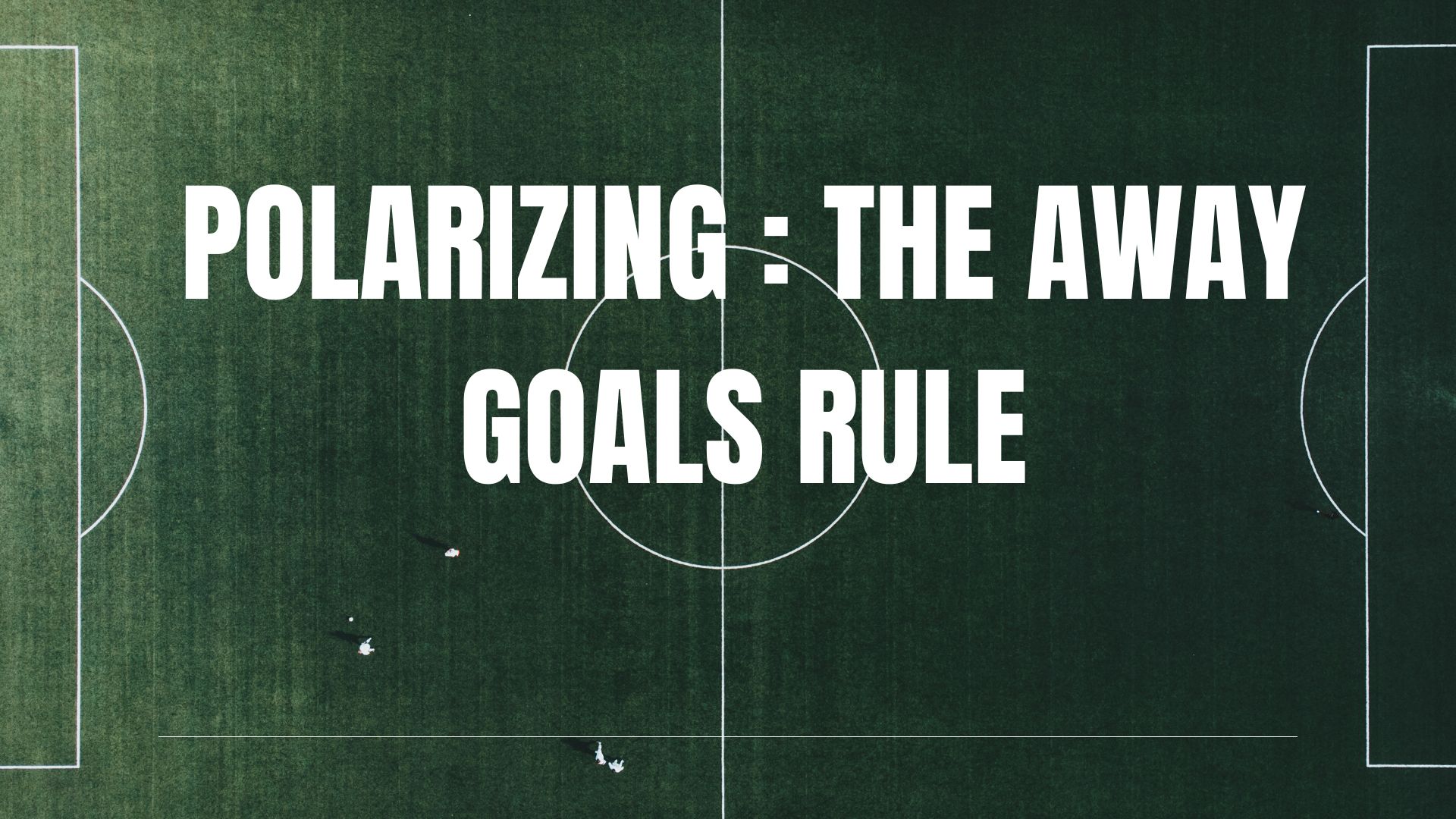What Happened With the Away Goals Rule?
Why Was it Scrapped?

The 2018/19 Champions League semi-final between Tottenham and Ajax remains one of the clearest examples of how the Away Goals Rule defined football history. Tottenham, trailing 3–0 on aggregate at halftime in Amsterdam, mounted a stunning comeback through a Lucas Moura hat-trick. His last goal, scored deep into stoppage time, sent Tottenham to the final not because they were ahead on aggregate, but because they had scored more away goals. That single technicality turned a dramatic tie into a legendary one.
The rule had long been part of European football, designed to separate teams level on aggregate in two-legged knockout matches. Simply put, when both sides scored the same total number of goals, the team with more goals scored away from home would advance. For decades, this rule shaped how clubs approached matches in the Champions League, Europa League, and other continental competitions.
However, by 2021, UEFA abolished the Away Goals Rule, claiming it no longer suited the modern game. The decision sparked debate between purists who saw it as part of football’s identity and others who viewed it as an outdated tactical burden.
The Away Goals Rule was football’s most famous double-edged sword. It delivered some of the sport’s most thrilling moments, but it also forced home teams into defensive caution and punished attacking intent. Its removal was, in many ways, inevitable once the game evolved toward faster, more aggressive football.
The main argument for keeping the rule was simple, nothing created drama like the Away Goals Rule. A single goal could flip a tie instantly, often changing who advanced within seconds. This unpredictability made knockout football electric and gave it a sense of danger that no other rule could replicate.
The rule was also designed to reward bravery. When it was introduced in 1965, away matches were far tougher, poor pitches, hostile crowds, and difficult travel meant that scoring on the road was genuinely hard. The Away Goals Rule encouraged visiting teams to attack rather than defend for a draw, making continental football less passive and more entertaining.
Its effect on players and fans was immediate and emotional. Conceding an away goal at home often triggered panic, forcing teams to throw men forward and chase the game. That tension produced some of the sport’s most unforgettable endings: Tottenham’s miracle in Amsterdam, Roma’s comeback against Barcelona in 2018, or Chelsea’s late equalizer at Camp Nou in 2012.
The rule turned aggregate ties into stories of razor-thin margins and emotional extremes. Every goal mattered twice, once for the scoreboard and once for survival, which is exactly why so many fans remember those moments as some of football’s purest drama.
Over time, the Away Goals Rule began to work against the kind of football it was meant to promote. Instead of encouraging attacking play, it made teams more defensive, especially at home in the first leg. Coaches often preferred to protect a clean sheet rather than risk conceding a goal that could count double against them later.
This created a tactical imbalance. Home teams played cautiously, avoiding mistakes rather than chasing goals. Meanwhile, away sides were rewarded for sitting deep and waiting for a single counter-attack, knowing one goal could put huge pressure on the opponent. Matches that should have been open often became slow and tactical, with both sides afraid to overcommit.
Another key issue was fairness in extra time. In the second leg, if the game went beyond 90 minutes, the away team had an extra 30 minutes to score a goal that still counted double. This was widely viewed as unfair, since both teams played equal time, but one side’s goals were worth more purely based on location.
By the late 2010s, even coaches like Arsene Wenger, Diego Simeone and Jose Mourinho admitted the rule had outlived its purpose. The advantage of playing at home had decreased due to better travel, neutral conditions, and global broadcasting standards. The game had evolved, but the rule had not.
UEFA removed the Away Goals Rule in 2021 after more than five decades, arguing that it no longer reflected the balance of modern football. The decision was meant to simplify two-legged ties and encourage teams to attack freely in both legs without fear of being punished by a single conceded goal at home.
Under the new system, if the aggregate score is level after two matches, the tie now goes to extra time and, if needed, penalties, no matter where the goals were scored. This made every goal worth the same, restoring basic fairness and removing unnecessary complexity.
Since the change, early results have shown mixed outcomes. Some matches have indeed become more open, as teams no longer sit back to protect an away-goal advantage. Others have remained just as cautious, showing that tactics depend mostly on team style and manager philosophy than on the rule itself.
Still, most agree that the change makes the competition simpler to follow and more balanced for both teams. The focus has shifted back to scoring more goals overall, not where they are scored.
The Away Goals Rule created unforgettable drama and some of the most iconic nights in European football history, but it also caused tactical caution and unfair outcomes. Its removal was not about erasing history, but about adapting to the modern game, where travel, stadiums, and conditions no longer make away matches drastically harder.
Now, every goal carries the same value, and both teams approach ties on equal terms. While some fans miss the sudden, emotional chaos the rule created, most players and coaches agree that football is better when it rewards attacking intent rather than defensive calculation.
In the end, ending the Away Goals Rule marked the start of a simpler, fairer era, one where victory depends purely on scoring more than the opponent, no matter where you play.








